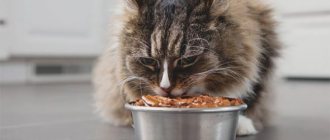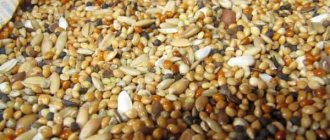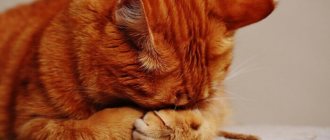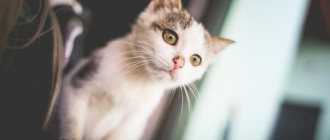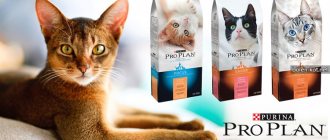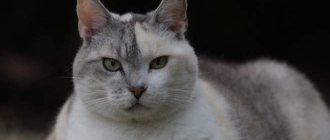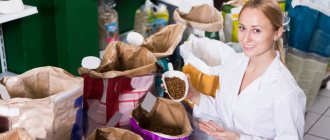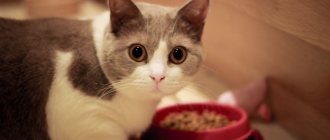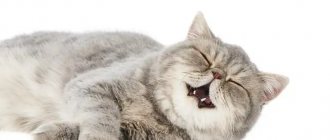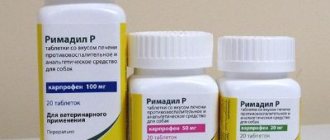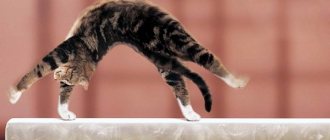Underweight is no less dangerous than obesity. Most often it is associated with poor living conditions and selectivity in food. Because of this, many owners try to cope with the problem on their own and are looking for ways to fatten their cat without seeking help from a veterinarian.
But we must not forget about pathological factors that affect appetite and nutrient absorption. In these cases, the animal requires mandatory treatment, so to be on the safe side, it should be scheduled for examination at a veterinary clinic.
Choosing a kitten in 10 steps. Blog of user Mira88 on 7ya.ru
So, you have decided to get serious about buying a purebred kitten and want to know how this should happen.
Below I will give a few key points that must be taken into account so that the purchase does not cause disappointment. Choose and buy a kitten personally. The kitten should be chosen by the future owner himself, or by the owners if the family consists of several people. Remember that you choose not only a kitten, but also a breeder with whom you will have to communicate after the purchase for advice. Before... Discussion
Today there is still a lot of pain that animals endure, so to speak, and you know in such a situation it is still quite important to choose the same kitten with a full package of documents. Yes, I agree with you that this way you will have to spend more money than even buying a kitten from the market, but at the same time you will be sure that the cat is healthy
In addition, when I adopted the kitten three months ago, even though I had documents, I took the kitten for examination to a doctor.
The main mistakes when planning your diet
I would also like to touch upon the topic of mistakes in feeding pets, made by owners with the best intentions. Despite the fact that each owner chooses his own intuitive diet plan for his pets, one can notice repeated and very sad “rake”, which people regularly continue advance.
Some cat owners believe that the doses of dry food indicated on the packaging are too small for their cats; some overfeed their pets with all types of meat, being confident in its clear benefits.
Sometimes an abundance of healthy food can cause various ailments
Complications with digestion or hair that arise later in an animal sometimes cause genuine surprise among the owners and a lack of understanding of their role in the resulting illness. We’ll talk about how to recognize your mistakes in planning your cat’s nutrition and stop them in time.
Common mistakes in feeding cats
Causes of exhaustion
There are many causes of exhaustion that cannot be covered in this article. The simplest and most concise classification of causes is presented below.
Physiological
Physiological reasons include weight loss due to circumstances in which the cat could not fully satisfy its nutritional needs. This applies to stray cats, cats in heat, and cats experiencing prolonged stress. Physiological exhaustion is also typical for cats that have fattened a large litter and given all their energy and nutritional resources to their offspring.
Both cats and female cats change their behavior during the period of sexual heat, sometimes forgetting about food
As you can see, the causes of physiological exhaustion are exogenous; they are tied to the specific environment with which the cat interacts.
Thus, a stray cat can be brought into order with the right diet, a cat experiencing stress can be calmed down. The mother, who fed the family, is fed back to a healthy state. Among other things, some breeds have a predisposition to thinness - Sphynxes, Ukrainian Levkoys are difficult to fatten, which is also due to their peculiar bodily constitution.
Some breeds do not need fattening, being thin by their constitution
Pathological
Pathological causes include malfunctions in the pet’s body itself. No matter what comfortable and stabilizing conditions a cat with pathological thinness finds himself in, his condition will not change. The causes of such exhaustion can be both acquired and congenital diseases.
Refusal to eat caused by internal pathologies requires a diagnosis and selection of a treatment regimen.
To feed such a fragile pet, you must first undergo an examination with him at the veterinary clinic. The test results will show the cause of problems with weight gain and the veterinarian will develop a diet that is suitable for your pet. It is not recommended to act as a nutritionist on your own for cats with pathological thinness, since the likelihood of complications is high.
The tendency to be overweight is determined by breed
We will not deny that some breeds are more prone to obesity than others. However, this is not a verdict, and everything is again in the hands of the owner. The cat gets fat not only because she is British, but also because she gets too much food. By eliminating the cause, you will get rid of the effect.
Please note that reversing obesity is much easier at the initial stage. If you see that your cat’s sides are rounded, and the spine and ribs are hard to feel under a layer of fat, you should reconsider its diet without waiting for it to turn into a ball.
What to feed?
To ensure that your pet’s body weight corresponds to the norm, it is recommended to feed it with special food or include protein foods in its diet.
Proper weight gain occurs through the animal's consumption of protein, not fat, so that the cat does not gain weight due to fat. The owner of the mustachioed dog needs to focus on protein products. They should make up at least 85% of the diet. It is also necessary to feed the cat carbohydrates - they will give the animal energy. Useful macroelements and vitamins for cats can be obtained from regular food, or through specialized food designed for weight gain. The main thing is that the cat’s diet contains substances such as:
- meat;
- minerals;
- cereals;
- carbohydrates;
- vegetable proteins;
- yeast;
- eggs;
- oils and fats.
Natural food
Animals must be accustomed to eating regular foods. It is best to do this when the whiskered kitten is still a kitten. But if for some reason this was impossible, the cat can be accustomed to food gradually. If the owner wants to fatten the cat using natural products, then it is necessary to include in the diet such food as:
- lean chicken or turkey meat;
- porridge;
- yogurt, cottage cheese, sour cream.
- vegetables in their natural form.
Vitamins that are recommended to be given to pets contribute to good absorption of food.
In order for all food to be well absorbed, it is necessary to give the cat vitamins and adhere to the following rules:
- Do not mix homemade and store-bought products.
- Do not add fat, sugar, salt or other seasonings to your cat's food that increase taste or thirst.
- There must be enough water in the drinking bowl.
- Monitor the animal's reaction to food. If it is negative, don’t give it anymore.
- Avoid dishes containing rice, barley, milk.
Dry and wet food
Dry food will help cats get rid of exhaustion. Its composition is similar to natural food, only in compressed and dried form, which makes it easier for animals to consume. With their help, the mustachioed person quickly gains weight, but does not gain weight, as with overeating. High-calorie premium food contains dairy products, proteins, grains and carbohydrates in the required quantities, exactly as much as is necessary to fatten and overfeed the pet.
Wet supplements should be used after surgical interventions or when the cat has given birth - they are absorbed faster and the animal recovers faster. Canned food can be used when feeding a kitten, since kittens have difficulty eating solid food. If your cat becomes very fat while eating food, you must stop eating it and show the animal to a veterinarian.
Manufacturers
Purina food is premium and contains natural ingredients.
To gain weight, cats need to be given food where meat comes first as an ingredient. These products are specifically designed to make your cat fat. A good, expensive product made from natural ingredients will not leave your cat indifferent and she will happily consume it. Premium ready-made food is produced by such companies as:
- Royal Canin;
- "Purina."
How to choose?
There are no special recommendations on choosing food to fatten a cat. Everything is based on the advice of the veterinarian and the tastes of the animal. To obtain high-quality weight gain, the nutritious product must be consumed for at least 2 months, after which changes in the cat’s figure will be noticeable
It is important for the owner of the cat to give food correctly, according to the instructions, otherwise the cat may become overweight. The daily intake rate is indicated on the food itself.
Recipe No. 2
Fresh meat for lunch:
- Chicken breast - 100 g.
- Lean pork meat (can be replaced) - 30 g.
- Rice - 1 tbsp. spoon.
- Chopped parsley - a handful.
- Vegetable oil - 1 teaspoon.
Chop the meat with a knife and mix with the rest of the ingredients. Store for no more than 2 days.
Fresh meat for lunch
Anorexia
The disease can be called an extreme degree of exhaustion only conditionally.
Anorexia is characterized by severe thinness due to a dulled feeling of hunger. And if in humans the reasons are obvious, then in cats everything is not so simple. Let's list some of them:
- Chemotherapy course. Treatment of malignant tumors is often accompanied by a host of side effects. One of them is a radical refusal to eat. The cat loses interest in food, refuses to play, prefers to hide in secluded places and sleeps a lot.
- Consequences of a major operation. Medicines, including anesthesia, greatly affect the pet’s mood and its orientation in space. They can have a detrimental effect not only on taste preferences, but also completely deprive them of interest in food. Even months later, your cat may still feel the effects of a major surgery.
- Failure of the senses. Usually associated with traumatic brain injuries. This leads to disturbances in neural communication, loss of taste or smell. The cat simply does not understand what is edible and what is not. She can experiment, but in most cases she will get a negative experience. All this leads to the described illness.
Anorexia is very different from simple weight loss. In this case, simple fattening is not enough. In any case, you should contact a veterinarian, get tested and undergo a course of treatment.
The topic of such a specific illness as anorexia requires special attention. This disease is widespread not only in the human world, but also in the animal world, which only a few pet owners know about. Anorexia should not be confused with extreme malnutrition, as it is only one of the possible consequences. Anorexia is a refusal to eat due to lack of hunger.
The problem of anorexia cannot be solved by fattening. Since this serious condition occurs in emergency cases, its management should be left to a veterinarian. Sometimes cats are given IV drips so that the animals can receive nutrients through a vein. Sometimes special devices (for example, probes) are used to put food into the pet's mouth.
Genetic miniature
Experienced breeders build genetic lines so that one of the main characteristics of the breed - resemblance to a teddy bear - is well developed. Thin and scrawny cats are removed from breeding.
The situation is different with pets that are bred without permission, pedigree or prior training of the owner. Suppose the cat was not bought for breeding, she grew up miniature and could be an excellent pet, but the owners decided to make money from her by selling kittens.
What age can be considered correct to buy a kitten?
A small one-month or two-month-old kitten looks funny and very cute. Those who want to get a furry friend think that a kitten at three or four months is already too big, will not be able to quickly get used to a new place, and will play less. The buyer, fascinated by the cute face, does not think about the fact that he will have to replace the kitten’s mother and teach him to eat, use a tray and scratching post, wean him from gnawing wires, biting, scratching and many other important things
And it doesn’t matter whether he’s purebred..
Discussion
Everything is correct) We have reserved our kitty, we will pick it up at 4 months) In the meantime, she hangs out with her sisters, mommy, learns good manners, she gets her first vaccinations and sends us reports and photos)
Our cat came to us at 4.5 months. I managed to see enough of the childish expression and funny behavior. Got used to it instantly.
How long does it take to train a cat to go on a diet?
Give your cat a week or two to get used to the new diet. First, mix ¼ of the new food with ¾ of the usual food for 2 to 4 days. Then increase the amount of new food to half, and in the last 3 to 5 days before the final transition to the new diet - to ¾.
To improve palatability, you can heat the food and add flavoring additives, for example, based on fish oil containing Omega-3 fatty acids.
If your cat refuses a new diet, or if you have any questions while introducing her to a new food, do not hesitate to contact your veterinarian for advice.
What to feed a cat
To begin with, let’s note some of the nuances that accompany the preparation of a new diet. Lack of nutrients, vitamins and problems with the gastrointestinal tract make their own adjustments:
Food should be high in calories. The point is very simple. In order for a fat layer to form, not all nutrients must be processed, but some of them must be deposited. For a cat to gain weight, fats are still preferable to carbohydrates.
Food should be easily digestible. Everything is simple here. An emaciated and weakened cat cannot actively move to break down “heavy” fats, carbohydrates, etc. Therefore, with the right diet, the cat will absorb nutrients as efficiently as possible with a minimum of physical effort.
Large amount of protein. Fasting leads to amino acid deficiency. You can quickly and easily replenish it with meat or meat products
Particular attention should be paid to the quality of the product: the higher it is, the faster the cat will gain weight.
Portions should be small, and feeding should occur strictly on a schedule. The animal will quickly get used to this rhythm.
Let's pay attention to a diet made from natural products. What should you feed your cat to make him gain weight?
Any meat product should be inspected for the presence of mold and parasites. Rinse thoroughly. The raw product should not be given; it is better to boil small pieces. Remove any bones to prevent the weakened animal from choking. Once every two weeks you can serve chicken or beef liver, which should be frozen a little, then scalded with boiling water and served to the cat’s table. You can use sea fish, but in no case river fish. The portion should be small. Frequency no more than 1 time every 2 weeks. Sometimes the diet includes jellied meat made from cartilage. As for porridges. They are quite difficult for cats to digest, but in small quantities they are necessary to fatten the cat to a large size. It is recommended to cook cereals a little longer than required. This will improve the digestibility of the product by the cat’s body. Experts recommend oatmeal and bran. If desired, you can simply brew them with boiling water and leave covered for 10-15 minutes.
Milk is acceptable, but in extreme cases and in minimal doses. The cat's body does not digest lactose. True, this does not prevent kittens from feeding on their mother’s milk in the first months of life. Excess product leads to stomach upsets: diarrhea, vomiting, etc. One bowl per week is more than enough to maintain your pet.
It is better to mix vegetables with minced meat. Cats are reluctant to eat plant foods, although there are often cases when animals nibble grass or indoor plants to replenish vitamin B in their bodies. It is not recommended to cook vegetables, because... they lose most of the nutrients
Breeders most often pay attention to tomatoes, cucumbers, cabbage, and zucchini.
Dairy products like yogurt and kefir are desirable, but if your pet cannot tolerate them, experiences weakness, or diarrhea, then it is better to give them up. Preservatives, foods with flavor enhancers, and foods richly seasoned with salts and spices are excluded from the diet. Similarly, legumes, beets, potatoes are prohibited
Also undesirable for cats are raw chicken eggs (boiled once a week is quite acceptable), fruits (in particular grapes), and baked goods.
Let's look at one more question. Breeders are often interested in what vitamin complexes and supplements should be used during natural feeding? Yes, indeed, in most cases, veterinarians recommend such drugs.
Industrial food (premium class, of course) contains the most balanced complex of vitamins and products. The following medications are recommended for kittens:
- GIMPET Baby-tabs;
- Beaphar Kittys junior;
- 8 in 1 Excel Brewers;
- Canina cat mineral with Ca;
- Hartz Everyday Chewable Vitamins with Taurine;
For adults it is recommended:
- Anivital;
- Bearhar 8 in 1;
- Canina;
- Pharmax.
Recipe No. 5
Milk breakfast:
- Powdered milk - 1 tbsp. spoon.
- Chicken eggs - 2 pcs.
- Cottage cheese - 3 tbsp. spoons.
- Chopped vegetables - 2 tbsp. spoons.
Add a few tablespoons of cold water to the milk powder, then beat in the eggs and bring the mixture until smooth. Gradually stir in cottage cheese and vegetables. Pour the mixture into the pan and cook for 2 minutes on each side. Cool, cut and serve to your pet.
Milk breakfast
Attention! Remember, no salt or spices should be used in any recipe. They will irritate the animal’s receptors, which will negatively affect its sense of smell and perception of taste.
How to help your cat gain weight
You can go two ways, they differ only in price. There are special foods for weight gain; they are expensive because they belong to the medicinal class. If your cat is critically ill or cannot digest natural food, this is the only alternative. If the cat’s thinness is insignificant, then a natural diet will do.
Let’s immediately make a reservation that a diet for weight gain is developed on the basis of a proper natural diet. Weight gain is achieved by replacing proteins with carbohydrates. You should not give your cat fatty foods, since you should strive to gain muscle mass, not fat mass.
Proper nutrition, increased calorie content, easy digestion - how to combine?
A cat's natural diet is based on its needs. A healthy wild cat consumes a certain amount of food per cat, 85–90% of which is protein sources. When feeding pets, you need to strive for this indicator, but let’s immediately say that it is difficult to achieve.
Weight gain will not occur if the cat is deficient in proteins, so the diet should be based on meat (frozen or boiled). For normal intestinal function, the cat must receive coarse fiber, and these are unprocessed cereals, vegetables, fruits and herbs. Don't forget about vitamins, but we'll talk about them below.
The diet for a cat to gain weight is compiled according to the following list:
Meat - beef, rabbit, chicken, quail, lean (boiled) pork, not often. Meat must be boiled or deep-frozen, otherwise there is a risk of infection with worms.
Fish – boiled, oceanic, noble varieties. It is better not to give river fish to cats.
Chicken and quail eggs - raw and boiled, 2-3 times a week. More frequent use will create additional stress on the liver.
Natural (homemade) dairy products - cottage cheese, kefir, fermented baked milk, yogurt. Homemade products are introduced into the cat’s diet gradually, since they have a significant fat content.
Homemade whole milk puts a strain on the liver, so it is introduced into the diet gradually and in small quantities
If a cat experiences diarrhea after drinking milk, it should be excluded from the diet.
Hard cheese is a healthy product that contains friendly lactic bacteria.
Cereals - buckwheat, rice, oatmeal, with caution wheat porridge (can cause indigestion and flatulence).
Vegetables – carrots, sweet peppers, raw potatoes. A cat is unlikely to eat vegetables in their pure form, so it is recommended to grate them and mix them with cottage cheese or minced meat.
Fruits - at the cat's request.
Greens – parsley, dill, grass for cats
Greens contain vitamins and help improve digestion.
Oils – flaxseed, sunflower, olive (strictly as an additive).
As additives you can use fish oil, meat and bone meal, brewer's yeast. If thinness is a consequence of illness, it is better to entrust the choice of supplements to a veterinarian. Thin cats often experience indigestion; sometimes, this situation can be relieved with the help of coarse fibers, for example, steamed bran.
Vitamin supplements
Thinness weakens a cat! Your task is to adjust your diet so that the body has to spend as little energy as possible on digesting food. Achieving this golden mean can be difficult, especially if the cat is allergic. Vitamin supplements can close “gaps” in the diet and stimulate metabolism. Specialized complexes can be purchased at a pet store. At home, you can prepare nutritious and easily digestible meals for your cat.
As sources of fast carbohydrates, you can give your cat:
- Jelly (jellied meat) without fat.
- A mixture of meat scalded with boiling water and steamed oatmeal.
- Boiled liver with cereals.
- Homemade fermented milk products.
- Boiled yolks – not often.
- Baby food puree without legumes.
- Dry baby food - very careful! Contraindicated in cats with hormonal imbalances.
You should not overfeed your cat; it has been proven that weight gain occurs faster if the animal receives food in small portions, but often. This is due to the process of digesting food, reducing the load on the intestines and liver.
Feeding rules
If your pet really needs increased nutrition, you need to understand what you need to pay attention to. How to fatten a cat if he is thin? There are two options here - natural food and professional ready-made food.
Which one to prefer depends entirely on the choice of the owner. Under no circumstances should different types of feeding be mixed. Otherwise, it will immediately affect the health and well-being of the pet. Cats typically eat several times a day. At the same time, they themselves measure the size of their portion.
How to organize meals
If the cat has a good appetite, then the task of feeding it will be easier to complete. You just need to provide the products in the right quantities. First of all, you should make a choice of feeding method: natural or dry food
It is important to remember that these two types of nutrition cannot be mixed. If the owner has settled on dry food, then he should understand that it is not cheap
Now let's talk about what to feed your domestic cat to make him fat. Cheap food most often results in health problems for cats. These could be kidney stones or, worse, cancer. Therefore, it is best to feed with premium diets (“Hills”, “Brit”). If you decide to feed natural food, then the basis of the diet should be meat, poultry and fish. Don't get carried away with fatty varieties. Add cereals to your diet, excluding rice and pearl barley. Also don't forget about fermented milk products and vegetables. To prevent your pets from refusing them, mix in the minced meat. Observe what kind of treat they like and satisfy their taste preferences. This is the most effective way. The only thing you shouldn’t do is overfeed and give something that will harm your health. Before starting the process of fattening a pet, the owner must visit a veterinarian to check if everything is in order with the animal’s health. If the doctor gives a positive opinion, then deworming should be carried out at the first stage. To do this, anti-parasite medications are purchased at the pet store.
Further, the cat should not be given large portions at once. Appetite is increased by gradually stretching the stomach. To do this, buy vitamin complexes at the pharmacy. After the stomach stretches, the animal will eat more. In addition to the vitamin complex, vitamin C should be given twice a day for 7 days. In order for your pet to eat the dragee without problems, you need to crush it and mix it with water or a piece of minced meat. Water is drawn into a syringe without a needle and injected into the mouth.
Features of feeding kittens
Kittens are fed in the same way as adult animals. The only difference is in the volume of portions, frequency of feeding and the list of acceptable foods. If an adult cat needs fewer calories, then kittens need significantly more. In addition, they can be fed up to 8 times a day, but in small portions.
Before all the molars appear, the menu should be less varied, but always balanced. For this reason, it is much easier to use ready-made dry food.
Table: comparative characteristics of dietary feeds of various brands
| Name of food | Class | View | Flavors | Peculiarities | Price |
| Eukanuba Adult Sterilized Weight Control Chicken | Superpremium | Dry | Chicken | Designed for sterilized and neutered male cats |
|
| Hill's Prescription Diet Metabolic Weight Management | Superpremium | Dry | Chicken | Allows you to maintain optimal weight |
|
| Hill's Prescription Diet Metabolic + Urinary Weight Care | Superpremium | Dry | Chicken, turkey | Also used for cats with urinary tract diseases |
|
| Hill's Prescription Diet i/d Digestive Care (jelly) | Superpremium | Wet | Chicken | Helps maintain a healthy digestive tract |
|
| Hill's Prescription Diet w/d Digestive/Weight Management | Superpremium | Dry | Chicken | Helps normalize weight in diabetic cats |
|
| Hill's Prescription Diet w/d Digestive/Weight Management (jelly) | Superpremium | Wet | Chicken | Better absorbed by the pet's stomach |
|
| Royal Canin Satiety Weight Management SAT34 | Superpremium | Dry | Chicken, poultry | Can be used for diabetes and urolithiasis |
|
| Royal Canin Neutered Adult Maintenance | Superpremium | Wet | Chicken, pork, poultry, liver | Suitable for sterilized animals in the postoperative period |
|
| Pro Plan Veterinary Diets Feline OM Obesity (Overweight) Management dry | Premium | Dry | Chicken, poultry | Used for adult cats |
|
| Farmina Vet Life Natural Diet Cat Obesity | Premium | Dry | Chicken, pork, poultry | Prevents muscle loss | 2 kg - 1709 rub. |
| Royal Canin Satiety Weight Management (jelly) | Superpremium | Wet | Chicken | Suitable for pets with diabetes |
|
| Purina Pro Plan Veterinary Diets OM pouches | Superpremium | Wet | Chicken | Helps maintain weight |
|
| Happy Cat Adipositas | Superpremium | Dry | Chicken, poultry | Also used for cats with liver disease |
|
| Brit VDC Obesity | Superpremium | Dry | Chicken | Suitable for British cats, grain free | 2 kg - 1240 rub. |
| Forza10 Active Line | Superpremium | Dry | Fish | Consists of heart-shaped granules | 454 g - 470 rub. |
| Enova Breeder Cat Light Indoor | Superpremium | Dry | Chicken, rice | Can be used to feed cats over 7 years of age | 10 kg - 6300 rub. |
| Bosch Sanabelle Light for cats prone to obesity | Superpremium | Dry | Bird | Provides quick satiety due to the large amount of dietary fiber | 2 kg - 1300 rub. |
| Barking Heads Adult Fat Cat Slim | Holistic | Dry | Chicken, salmon | Suitable for pets with sensitive stomachs |
|
| 1st Choice Weight Control | Superpremium | Dry | Chicken | Designed for adult animals | 5.5 kg - 2600 rub. |
Photo gallery: examples of dietary foods
Hill's Prescription Diet i/d Digestive Care stimulates the stomach and intestines Purina Pro Plan Veterinary Diets OM pouches improves digestion Royal Canin Satiety Weight Management comes in jelly form Forza10 Active Line has an original heart-shaped granule shape Happy Cat Adipositas helps reduce weight in cats with disease liver Hill's Prescription Diet w/d Digestive/Weight Management is used for cats with diabetes Hill's Prescription Diet Metabolic Weight Management helps maintain proper body weight Pro Plan Veterinary Diets Feline OM Obesity allows you to quickly lose excess weight
Beef
Meat is a source of protein. If you really want your pet to please you for many years, you should try to include boiled beef in its diet.
Raw meat can be given only frozen to reduce the risk of infection with worms. When thinking about how to fatten a cat, you must remember to give him beef. You will see how the coat changes and greater physical activity appears. If an animal eats properly, it will look the part.
What is cat thinness and its causes?
You should never compare your pet to the pet of a neighbor, friend, etc. Cats are very individual. Even brother cats from the same litter can have different body shapes and fatness. If the cat is “elite”, you should collect detailed information about the breed: characteristics, features, possible pathologies.
All cats are very individual and have different body shapes.
When does a cat need to be fattened to a large size?
- the spine and/or ribs are clearly visible;
- the tuberosities of the hip joint are clearly visualized;
- the stomach is sunken, sometimes pulsation of blood vessels is even visible on it;
- on the front and hind legs, in the sternum area, the muscles are flabby and weak (“saggy”).
If the cat's spine begins to show, then it is necessary to fatten it.
Why are some cats underweight?
Veterinarians conventionally divide thinness into physiological and pathological.
Physiological thinness may be associated
This cat needs to be well fed!
- with breed characteristics (for example, Sphynx and American Shorthair cats always look thin);
- with genetically determined metabolic characteristics (as they say, “not the horse’s feed” - a strong metabolism contributes to the rapid and intense “burning” of nutrients);
- with the degree of hunting activity (hunting cats are never fat - physical activity does not allow fats and carbohydrates to accumulate in the body);
- with feeding numerous offspring;
- Refusal of food if the pet does not like it. A cat may not eat for days or eat little while waiting for its favorite food.
Sphynx cats always look thin.
Pathological thinness is a symptom of some more serious disease. The root cause must be identified and addressed urgently.
Causes of pathological thinness
Outdoor cats can be very skinny.
- prolonged malnutrition or hunger (the animal is homeless or lost and is afraid to leave its shelter to eat). Stress and hunger are the two main reasons why stray and lost cats are thin. These two factors prepare the ground for the development of metabolic disorders and the occurrence of various infections.
- improper nutrition - a monotonous diet and failure to receive nutrients in the proper quantities deplete the body’s existing “reserves”, causing thinness;
- malabsorption and severe dehydration (diarrhea or vomiting) due to an imbalance in the gastrointestinal tract - colitis, enteritis, parasitic infestations, dysbacteriosis;
- medical intervention - operations, complications of pathologies, therapy with potent drugs.
Stress and hunger are the main reasons why stray cats are thin.
In case of dysbacteriosis and infectious colitis, additional measures will be required
- anti-epidemic measures (disinfection of the tray and household items, replacement of cat bedding, etc.);
- adjusting the diet (focus on carbohydrate foods - in case of illness, the restoration of cells and tissues requires a lot of energy, and it is easiest to get it from carbohydrates);
- a course of antibiotics or antiparasitic drugs.
If there is dysbacteriosis, the cat's diet should be changed.
Sources of fats
This element must be included in a cat’s natural diet, since it is not only, along with carbohydrates, a source of energy, but also supplies the body with many vitamins:
- A - improves vision, is responsible for the condition of the skin and coat;
- D - is of great importance for the formation of the skeleton;
- E - strengthens muscles, regulates the normal functioning of the genitourinary system;
- K - is an important element for strengthening joints and bones, and the functioning of the cardiovascular system.
In addition, fats give food an attractive taste and smell, promote intensive growth and harmonious development of the animal. Their share in the pet’s diet with natural nutrition should be at least 20%.
If it is not possible to provide the animal with food with a sufficient amount of these components, then fish oil can be added to it.
Is fattening required?
How can you tell if a cat is thin, has a normal weight, or is “fat”? First of all, there are a number of important points to note:
- The owner should not compare it with the pets of friends, neighbors, or close relatives. After all, in this matter there is individuality. Even 2 kittens from the same litter can have different constitutions: 1 is excessively thin, and the second is well-fed.
- If we are talking about purebred pets, then there are certain standards. Typically, the table indicates both minimum and maximum data - height and body weight.
- If the cat is of “noble” origin, then you will have to navigate “by eye,” or rather, by touch. The animal should be placed in a standing position - the front legs are straight, the hind legs are slightly pulled back, in the direction of the tail. You need to feel his spine, it should be smooth. While stroking your pet, the outer ribs should not be felt, and this is considered normal. Then the pelvic part is palpated - a moderately well-fed animal has a smooth croup, with slightly protruding knuckles. The abdomen may be taut or slightly saggy. When moving, a fold forms in the peritoneum area - this is also normal. There is a thin layer of fat on the sternum and abdomen that can be felt.
Recommendations
Often the owner does not have time to select natural ingredients for the pet’s diet. There are many reasons for this. Some breeders are inclined to feed dry food, citing the fact that manufacturers balance their product as much as possible. In fact, one jar contains a whole range of vitamins, minerals and supplements.
Of course, this applies to expensive food. Let's look at some companies that are recommended by experts and other breeders. The owners decide whether to use them or not. Dry food is convenient to store, easy to dose and, in most cases, pets like. Let's designate the top 3 dry food for use:
- Royal Canin Gastro Intestinal Moderate Calorie. Quite often prescribed by veterinarians. This is, in fact, a whole complex that allows you to put an emaciated animal back on its feet. It contains the necessary proteins, beet pulp, fish oil and even rice. There is an opinion that it is intended for obese cats. But this is not entirely true. A properly balanced diet allows you to both gain weight and lose weight.
- Hill's Science Plan Perfect Weight. The second food option, which is used for both weight loss and weight gain. This is quite normal, because... obesity is more common in domestic cats than thinness. The substances are selected to balance the digestion process and improve the absorption of nutrients. A minimal amount of fat will prevent stress on the liver and improve the absorption of nutrients.
- Acana Orijen SIX FISH. Complete, balanced food, which mainly consists of fish (perch, flounder, hake, sardine, herring). Less than half is protein. It contains not only fillet, but also by-products such as bones and entrails. This allows you to additionally saturate the feed with phosphorus, magnesium, zinc, calcium and other substances.
The addition of freeze-dried liver makes the product very attractive to cats. Many experts and breeders note that it is the smell, which is not created due to any additives, that gives the food such a desirable status among domestic animals.
Let's look at three wet foods that will also have a beneficial effect on the animal's weight. Let's stick to canned food. Obviously, wet food will allow you to gain weight much faster:
- Royal Canin Recovery. Canned food with a convenient key is often used during the rehabilitation period after a serious illness. Although there are some restrictions when using it. For example, with pancreatitis, hepatic encephalopathy, hyperlipidemia. The food encourages the consumption of water, which also has a beneficial effect on weight gain.
- Royal Canin Convalescence Support Cat. The basis of the food is pork, chicken, and pork liver. Consumers note rapid weight gain, increased activity, normalization of immunity and appetite. The food is also used during rehabilitation after a serious illness.
- Applaws Chicken & Duck. Canned food consists of 80% meat, which is cooked in its own broth. The product contains chicken and duck fillet, rice, broth. It is the composition that is as close as possible to natural nutrition that attracts consumers. Cats eat canned food with pleasure and quickly gain weight.
To gain weight, it is better for kittens to use wet food, because... Dry granules cannot always be chewed by your pet.
Additional measures
Unfortunately, mustachioed striped animals often find themselves in dangerous situations and their emaciation leads to pathological changes in eating behavior. It is often necessary to awaken a cat's interest in food before feeding it. There are several means for this:
- Vitamins . You should choose a suitable vitamin complex for your pet, which will help restore the animal’s body and provide it with useful substances. Cats are not always happy to take vitamin supplements. But even if the pet resists, the owner should be persistent. Tablets or dragees can be crushed to a powder state, diluted with water and poured into the cat’s mouth using a syringe without a needle. Also, drugs in solid forms can be crushed and mixed with food.
- Beneficial bacteria . It is recommended to give your pet probiotic products consisting of bifidobacteria and lactobacilli 30 minutes before meals. They normalize the intestinal flora, suppressing the activity of microbes that cause dysbiosis. In addition, lactobacilli are involved in strengthening the immune system, which is important for both sick and healthy pets. The most useful probiotics that have a positive effect on the animal’s intestinal microflora: Bifitrilak, Zoonom, Subtilis, Enterol, Lactobifadol, Olin, etc. It is allowed to use drugs from a regular pharmacy, for example, Lactobacterin, Bifidumbacterin.
Fermented milk products
Fresh cottage cheese, kefir, and fermented baked milk must be present in your pet’s diet. Milk, contrary to popular belief, is not recommended for cats. The fact is that it is learned only by babies. An adult may experience gastrointestinal upset.
If you try to feed your pet correctly, he will be at his ideal weight. Fermented milk products are generally very beneficial for the health of both humans and animals.
